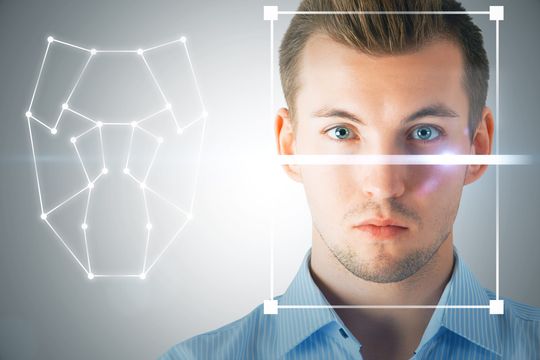Bit by bit, commercial office spaces from law firms and accounting offices to IT startups and corporate offices are cracking open their doors. In fact, America is 58% reopened, as of March 2021. Some staff are invigorated to escape their cloistered home life and return to a traditional office space. Many others are tentative or timorous. A few are terrified.
To ease staff fears, employers are reengineering their offices, creating one-way corridors and stairwells, limiting elevator capacity, enforcing social distancing, testing for fevers, and relentlessly cleaning and sanitizing. They are also propping open or removing doors, and evaluating and installing touchless security so staff can avoid contact with keycards, readers, door handles, and other surfaces. They are also exploring commercial access control systems with health-conscious and touchless functions at unprecedented levels.
How Can Building Owners and Property Managers Prepare for COVID-19?
Building owners and property managers need to be prepared and informed about how to implement tenant safety during COVID-19 and beyond. Waiting until there is an outbreak is too late. BOMA International’s comprehensive guidance “Getting Back to Work: Preparing Buildings for Re-Entry Amid COVID-19” details how to plan and prepare to keep commercial building personnel, tenants, and employers healthy and safe. Along with implementing social distancing, cleaning processes, and clear communication, building owners and managers should be aware of critical legal considerations that include liability, responsibilities, contracts, leases, and staff.
Commercial Access Control Systems
Commercial buildings use a hodgepodge of access control solutions. They might include optical turnstiles at the main entrance, proximity readers at doors leading to common areas, keypads on doors to storage areas or restrooms, and physical lock and key on office doors. Much of this infrastructure has been inherited from previous owners or tenants, with new layers added as the need has arisen. Covid-19 is forcing organizations to rethink this patchwork, accretive approach, replete with multiple objects and surfaces to touch.
Key Card Access Control Solutions
Today’s commercial access control systems are often key card-based, which allow centralized data processing and control, enabling access based on role, location, and time. Whereas everything once required separate physical keys, electronic systems can unlock any door. They also offer mustering and auditing capabilities, as well as integration with other security components and corporate systems. But landfills overflow with lost and stolen cards, and staff find ingenious ways to circumvent the system so they don’t have to pay for a replacement card. Frequently touched, shared, and borrowed key cards are also anathema in today’s hygiene-punctilious corporate environment.
Touchless and Mobile Technology
The new access control mantras are touchless and mobile first. Commercial spaces are seeing a “dramatic uptake” in touchless access control technology, according to Nicolas Garcia of IDEMIA, who spoke in a 14 July 2020 webinar presented by The OSPAs (Outstanding Security Performance Awards) called “Thinking about Innovation in security and crime prevention: where can we look and what can we find?” Other panelists mentioned facial recognition and contactless fingerprint technology as the leading biometric solutions. Iris recognition is also viable, but users often feel uncomfortable with the thought of a beam being transmitted into their eyes. Future Market Insights predicts a Covid-fueled boom in these technologies, amounting to a 17.4 compound annual growth rate of 17.4 percent over the next ten years.
Face Recognition Solutions
Facial recognition is expected to take the largest market share as it suits both identity verification and access control applications. Future Market Insights reports that “Facial recognition technology has been gaining momentum as … one of the most adopted contactless biometric technologies. From daily common tasks such as unlocking mobiles, to digital banking identity verification, and identity authentication for government applications, facial recognition market traction will continue to grow.” Companies and governments are also using face recognition to track and trace Covid-19 patients.
For commercial access control, facial recognition is largely passive—no touching anything, no peering into a scanner, no waving a hand or badge—quick, and convenient. There’s no need to set down a box or laptop to scan your hands or fish out a key card. Those features distinguish facial recognition from other touchless biometrics such as iris, fingerprint, vein recognition, and so on.
Mobile Access Control for Commercial Buildings
Mobile first access control is also gaining in popularity. Companies are leveraging the ubiquity of smartphones to make them de facto key cards. People routinely forget key cards, wallets, glasses, tablets, and eyeglasses–but they almost never forget to bring their phone to the office. That’s because they are so much more than phones: password receptacle, music system, video streaming device, camera, email and text terminal, web browser, GPS, game center, and so on.
The fear of touching a communal item such as a guest credential (when workers forget their key cards) has helped propel mobile-first technology into the realm of access control. Research firm IHS Markit reports that mobile credentials are the fastest growing access control product, up 150 percent in growth rate between 2017 and 2018. It predicts that more than 120 million mobile credentials will be downloaded in 2023.
Automatic Door Openers
Commercial access control systems with touchless capabilities solve the problem of touching a key card or a reader, but that still leaves the door to be reckoned with. Some organizations use optical turnstile lanes with or without drop-arms or swing-glass barriers. While effective, optical turnstiles are expensive, and are best used in high traffic areas, such as lobbies or main entrances to buildings.
Automatically opening doors is a possibility, but they add cost, increase maintenance, and opportunity for malfunction, and must be programmed to open and close slowly so as not to injure anyone. And a slowly closing door creates a vast vulnerability—tailgating, which frustrates the purpose of access control in the first place.
Other hands-free options are more viable and cost effective. For inward-swinging doors, a user can push open the door with a shoulder, forearm, elbow, or even an object in their hand. Doors that swing either way are a bad idea unless they are transparent, and organizations likely won’t be replacing their opaque doors with glass counterparts en masse. For outward-opening doors, some organizations ask their staff to use a paper towel, napkin, tissue, glove, shirtsleeve, jacket, or some other article or item. Some offices keep paper towels, sanitizer, and a trash pail at each door.
Some companies have issued staff a brass hook-like handheld device that can be used to pull open doors and push buttons. A fastidious user could enter through one or more doors, then clean the device once they get to their desk or other destination. Several variations of this kind of device are now available on the market. In addition, critics say that the device doesn’t offer much protection if it isn’t cleaned regularly.
Enhancing the Access Experience
While safety and security are paramount, of course, touchless technology conveys the “it” factor. It’s a modern, sleek technology that suits fast-paced lives in a fashionable way. Such features can mean the difference in a hot startup company signing a lease for your space or looking elsewhere in a depressed market for office rentals.
And subleases are pouring into the market as companies downsize or shift staff to home office. Unlike landlords, who are often content to sit on empty properties, tenants require cash flow. Companies looking to cut costs by subletting their rental properties can gain an edge in this competitive market by showcasing next-generation commercial access control feature.
Want to Learn More About Touchless Access Control Solutions?
We'd love to hear from you and help find the right solution for your building.




